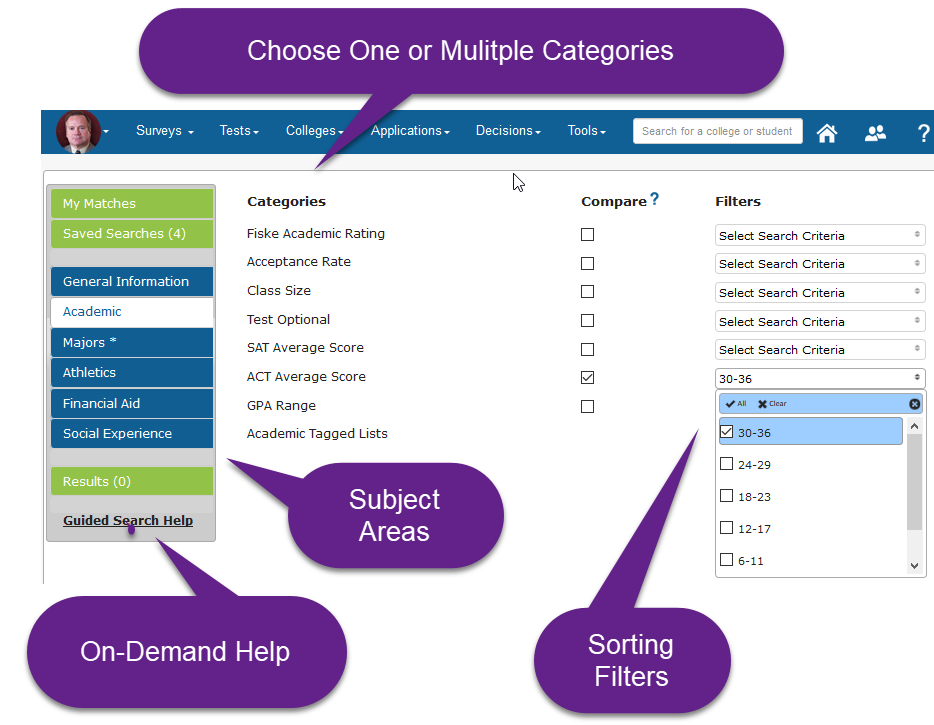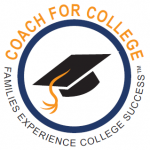Rankings, Selectivity, and Building Your College List
The college admissions process ignites stress and anxiety for student and parents.
Reducing stress and anxiety should be an objective of any college selection process.
A prelude to your admission selectivity efforts is building your college list and choosing your final application schools. There are two sides to the process. One, college rankings whereby highly ranked schools are “selective”? The other side pertains to how the student and family conduct their college search process to arrive at application schools.
Chasing College Rankings May not be the Best Option
How does a school become selective? Low admission rates and college rankings are two fundamental reasons. One might argue the latter comes first, so the school has the demand to practice low admission rates.
What do college rankings measure? Usually, data that is easy to gather. By nature, this data is not always the most meaningful for the student in deciphering the likelihood of the school satisfying their well-being.
For example, the most prevalent ranking system U.S. News & World Report (2017 stats) ranks graduation rates and reputation as very important.
Six-Year Graduation Rates are the most heavily-weighted category using historical graduation rate (18% of score total) and a “projected graduation rate” (7.5% of score total) metrics that add up to 24.5% of each school’s ranking score.
What happened to graduation rates in four years? Our Coaching Program “, The Guaranteed Graduation Program™, addresses this issue eliminating consideration of six-year rates and the corresponding potential 50% increase in costs.
Here is the issue with the importance of graduation rates as a school rating criterion. Student behavior (planning) and family demographics are more significant drivers of graduation outcomes than the schools themselves.
Freshman retention rates are a critical component of graduation rates. An enrolled freshman who does not return counts against a school’s graduation rates. Using six-year graduation rate helps cover this potential issue of concern.
The second largest category of the above ranking system is reputation; peer (15%) and guidance counselor (7.5%) combine to account for 22.5% of a school’s score. The ranking service admits these are both subjective based upon survey results.
These two most significant ranking categories count for almost half (47%) of a school’s ranking score. The first uses a failed assumption which can increase the cost of college and the second interprets surveys.
There is a better way than chasing college rankings.
Student Engagement Inside and Outside the Classroom
The value of education should not focus on rankings. Instead, the potential for student experiences through student learning style/interests, student happiness, academic stimulation with professors, and meaningful extracurricular activities.
Engagement in the undergraduate experience can be more critical than the selectivity of a school in finding the right school for the student to flourish.
There is no evidence that the opportunity to learn is less at schools who are not considered selective or high rankings. Study time is study time regardless of where it occurs.
Students should focus on identifying school environments supporting their learning style. Certain practices increase their engagement with learning. Interestingly, these same practices benefit students in job satisfaction and well-being beyond college (Gallup Inc., 2014);
- Finding a mentor who encourages the pursuit of personal goals,
- Working with professors who care about students personally,
- Taking courses with exciting professors,
- Taking an internship that captures classroom learning and student interests,
- Working on projects across semesters,
- Being active in extracurricular activities,
- Contributing/involvement to the campus community.
There is no single right focus for the college search. The search is for engagement opportunities in and out of the classroom. The question becomes how to proceed with such a quest to find the right college.
Critical Thinking – Assemble, Evaluate, and Interpret College Search Information
First, the student’s effort will synthesize over time. Second, there are structural and attitudinal considerations.
Structural considerations are the tools we use to gather information and the actual school programs evaluated. Attitudinal are the interpretations and conclusions the student determines of value to their qualifying criteria for school selection.
The sorting, collection, storage, and retrieval of the information process should be available in different formats such as text, graphical, and video with on-demand help. As the process evolves, schools become grouped into My Schools (application), Interested Schools, and Not-Interested Schools.
Throughout the evaluation process, the student can frame questions where answers form developmental and intellectual frameworks in comparing schools. For example, what is essential to the student?
Of course, there are broad categories such as academics, location, and school size. The student should have the ability to evaluate academics and campus for deeper meanings.
What type of academic and social activities are available? Here are some thought concepts; extracurricular programming, culturally diverse student body, study-abroad track record, comprehensive support for students with learning differences, international languages program, religious denomination, student body size, city of location size, geographic diversity, leading research opportunity with opportunities for graduate-level work, professional preparation programs (perhaps accelerated), and the list goes on based upon students’ interests and outcome desires.
Another critical consideration is the attitudinal perspective toward the financial cost. Cost analysis can be complicated when the average person lacks understanding of the complexities of how college pricing works. The hindrance is a lack of college environmental clarification with financial concepts related to the “net” cost of college.
Do you qualify for financial aid? Is merit aid financial aid? Are private schools always more expensive than public schools? What does Expected Family Contribution mean? What is a family’s funding gap? What does Percentage Need Met mean? Why does this school provide more financial aid than my favorite school?
During the college search, the financial issue often is left out until it is too late. The student chooses a school and is ready to go there, then reality steps in, how can we pay for this (Coaching Program Module 2 – Parents Achieve Financial Clarity™)?
Regardless of the family’s ability to pay, the financial issue requires attention as the college selection process evolves. Is there a budget? What is the student’s responsibility? Families need to have this discussion early in the college selection process. Disappointment is no one’s friend.
Hopefully, it is clear that students should not rely on ranking systems to guide them in choosing colleges to consider. Instead, the primary focus should be finding school/s where the student feels the opportunity for engagement developing relationships with professors/mentors, students, and being involved in the campus community.
Building the connections for the conversations referenced directly above is where college visitation and freshman year planning practices come into play (our Coaching Program Families Experience College Success™). While very important, our point here to set the stage for the college search to build the final college list of application schools.
Building the College List for Admissions Processing
The student should build a college list and narrow it down to 6-15 schools consisting of a wildcard, reach, target, and safety schools. The numbers are not in concrete, but an example might be three reach schools, three safety schools, and nine target schools (an example). Our coaching program “Students Choose Right College™ identifies the qualifications further.
The Internet contains most of the known facts about college planning, but they are worthless as dunes until organized into a reliable, actionable tool for the student.
The selection software provides knowledge in action tool where the student (and parents if desired) can conduct college search inside one online laboratory. The result saves a tremendous amount of time using personalized and streamlined accurate information for highly reliable results.
Highlights of The Most Comprehensive College Search Tool Available
Accurate College data resourced from Wintergreen Orchard Educational Consultants, plus updated each summer with college interns.
Student information collected (surveys) to personalize/integrate with the College data; personality assessment, college match, learning styles, and major-career search
Electronic scheduling/tracking; testing, financial aid, and admissions
Admission chance percentiles that help categorize schools into college list
Financial EFC calculated with explanation, college net price comparisons
# 1 College Search Tool: subject areas, numerous categories, filters; build multiple lists with drag & drop feature.
We referenced earlier how information should be available, “as text, graphical, and video with on-demand help”, it’s here.
The way we communicate and consume information has fundamentally changed for Millennials and Generation Z as a result of social media sources such as Facebook, Pinterest, and Instagram.
Millennials and Generation Z want information delivered fast and prefer multiple media (imagery emphasis) approaches for information absorption.
The College List Builder uses a drag and drop interface with the ability to click directly to the school’s information profile.

Schools are populated from the search screen by clicking “interested”. The “i” takes you to the College Profile Menu; General, Academics, Admissions, Financial Aid, International Students, Testing, Social Experience, etc.
Below is a sample of the College search screen. On the left, you can see the subject areas, Academic selection highlighted in white, categories “ACT Average Score” checked, and then “filtered” by average test score range of 30-36. The search would return schools where their average freshman inbound student scored on the ACT within the range checked, 30-36.
The best part is you can use multiple subjects-categories-filters and maintain multiple lists based upon the selection criteria.

Find-My-Spark™ is a personal assessment survey helping students discover their personality characteristics and preferred learning style. Here is a video tour example.
You need to drive it to appreciate it. Contact Jim Kuhner 817-600-0576, email [email protected].

 How to
How to